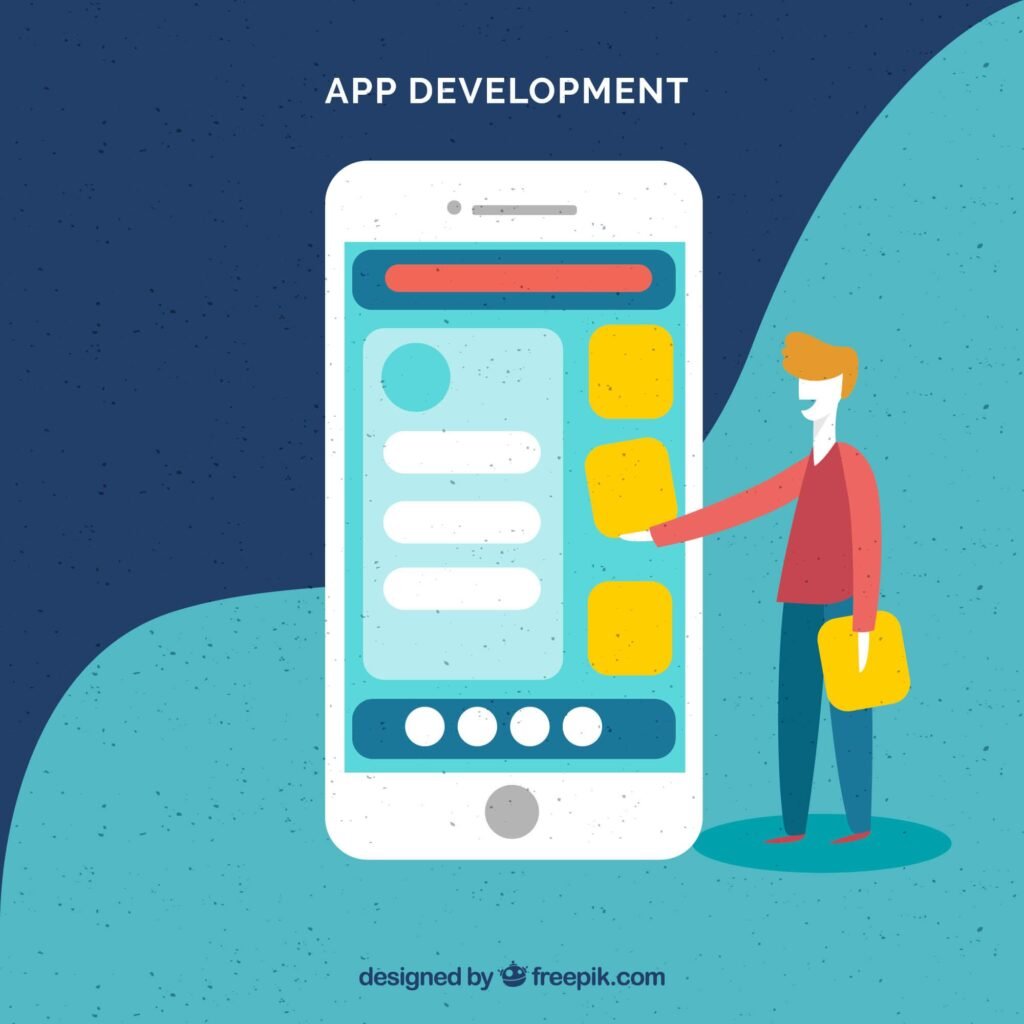In today’s globalized world, app localization has become essential for businesses aiming to reach international markets. Localization involves adapting an app to different languages, regions, and cultures to ensure that it resonates with users in various parts of the world. This process can be time-consuming and complex, especially when developing separate native apps for each platform. However, cross-platform development simplifies app localization by allowing businesses to create a single codebase that can be easily adapted for different markets across both iOS and Android.
In this article, we will explore how cross-platform development simplifies the process of app localization and how businesses can leverage it to expand their global reach. We’ll also compare cross-platform localization efforts to native development approaches, such as Swift, for iOS apps.
Why App Localization is Important:
Localization goes beyond simply translating an app’s content—it involves adjusting the app’s interface, currency, units of measurement, and even cultural preferences to fit the target audience. Effective localization enhances user experience, boosts engagement, and increases app downloads, as users are more likely to interact with apps that cater to their language and cultural context.
For businesses looking to reach global audiences, localizing an app is critical. By localizing their apps for different markets, businesses can tap into new user bases and drive higher engagement and conversions.
How Cross-Platform Development Simplifies Localization:
Single Codebase for Easier Adaptation:
One of the primary advantages of cross-platform development is that it allows developers to create a single codebase that works across both iOS and Android. This unified codebase makes it easier to implement localization changes across all platforms without the need for duplicating efforts. Once localization is applied to the cross-platform codebase, the changes are reflected in both iOS and Android versions of the app, reducing development time and costs.
A Cross-Platform App Development Company can help businesses streamline the localization process by ensuring that the single codebase is adaptable to different languages and regions. This approach allows businesses to make global updates and easily manage localization changes without having to modify separate native apps.
Efficient Translation and Content Updates:
Cross-platform development frameworks often provide tools and libraries that support efficient content translation and localization. For instance, popular frameworks like Flutter and React Native offer support for internationalization (i18n) packages that make it easy to translate the app’s text and user interface elements. Developers can use these tools to automate the process of translating content into multiple languages and ensure that the localized content fits seamlessly into the app’s layout.
With cross-platform development, businesses can also quickly apply updates or changes to translated content across all versions of the app. This efficiency is particularly important for apps that need to support multiple languages or adapt to regional variations in real time.
Consistent User Experience Across Markets:
Maintaining a consistent user experience is key when localizing an app for different markets. Cross-platform development frameworks make it easy to ensure that the user interface and design elements remain consistent across all platforms, even when the app is localized for different regions. This consistency helps reinforce brand identity and ensures that users in various markets have the same experience, regardless of the language or region they are in.
A Cross-Platform App Development Company can ensure that localized content is displayed correctly across all devices, whether users are on iOS or Android. The flexibility of cross-platform frameworks allows developers to adjust layouts, font sizes, and other UI elements to accommodate different languages, ensuring a smooth experience for all users.
Cost-Effective Localization for Global Reach:
Developing separate native apps for iOS and Android and localizing each one individually can be expensive. Cross-platform development reduces the cost of localization by allowing businesses to implement changes once and apply them across all platforms. This cost-effectiveness makes it easier for businesses to expand their global reach, as they can localize their apps for multiple markets without incurring the high costs associated with duplicating efforts.
By working with a Cross-Platform App Development, businesses can create localized apps more efficiently and at a lower cost, ensuring that they can reach a wider audience while staying within budget.
Cross-Platform Frameworks for Simplifying Localization:
Several cross-platform development frameworks offer robust tools and features for simplifying the localization process. Here are a few popular frameworks that make app localization easier:
- Flutter for Localization: Flutter, developed by Google, is a popular cross-platform framework that provides built-in support for localization through the intl package. This package allows developers to handle translations, date formatting, number formatting, and other locale-specific requirements easily. Flutter’s widget-based architecture also ensures that the user interface adapts smoothly to different languages and regions.
A Cross-Platform App Development using Flutter can implement efficient localization strategies that enable businesses to reach global audiences with ease. - React Native for Localization: React Native, backed by Facebook, offers various libraries for internationalization and localization, such as react-intl and i18next. These tools simplify the process of translating text and adapting the app’s layout to fit different languages and cultures. React Native’s modular approach allows developers to easily manage and update localized content, making it a flexible option for businesses that need to support multiple languages.
React Native also supports the ability to localize app settings, notifications, and content dynamically, making it easier for businesses to tailor the app experience for different markets. - Xamarin for Localization: Xamarin, a Microsoft-supported cross-platform framework, provides developers with access to native APIs, making it easy to localize apps for both iOS and Android. Xamarin.Forms includes localization features that allow developers to create resource files for different languages and regions. These resource files are used to display text, format dates and numbers, and adapt other locale-specific content across the app.
By using Xamarin, a Cross-Platform App Development can help businesses create localized apps that deliver a consistent experience while reducing the complexity of managing separate localization efforts for different platforms.
Comparing Cross-Platform Development to Native Swift Development for Localization:
While cross-platform development simplifies localization by offering a unified codebase, native development with Swift for iOS also provides robust localization support for businesses focused on iOS-specific apps.
- Optimized Localization for iOS: Swift allows developers to use Apple’s localization tools, such as the NSLocalizedString function and Base Internationalization, to localize text, dates, numbers, and other content for iOS apps. This built-in support makes it easy to manage localization within Xcode, Apple’s development environment and ensures that the app performs smoothly on iOS devices.
A Swift App Development Company can help businesses optimize their iOS apps for multiple languages and regions, ensuring that the app remains performant while providing a localized experience tailored to iOS users. - Fine-Tuned Localization for iOS Features: Swift allows developers to localize not only the app’s content but also specific iOS features, such as Siri commands, notifications, and Apple Pay interfaces. For businesses that rely heavily on iOS-specific functionalities, native development with Swift ensures that localization efforts are tightly integrated with the iOS ecosystem.
A Swift App Development can leverage Swift’s deep integration with iOS to create a localized app that takes full advantage of Apple’s ecosystem, providing a more customized experience for iOS users.
When to Choose Cross-Platform Development for Localization:
If your business needs to localize an app for both iOS and Android and you want to reduce development time and costs, cross-platform development is the ideal solution. A Cross-Platform App Development can help you create a single codebase that supports localization across platforms, ensuring a consistent experience for users in different regions.
When to Choose Swift for Localization:
If your focus is on building an iOS-specific app that requires fine-tuned localization and deep integration with iOS features, native development with Swift is the better option. A Swift App Development can optimize the app for iOS, ensuring that it delivers a localized experience while taking full advantage of Apple’s ecosystem.
Conclusion:
Cross-platform development offers an efficient and cost-effective solution for simplifying app localization. A Cross-Platform App Development can help businesses localize their apps for global markets, ensuring a consistent user experience across platforms.






More Stories
Why Business Needs Mobile App Development Services in USA?
Remote Full Stack Developers in Dublin
How Azure Cloud is the Future of AI & ML